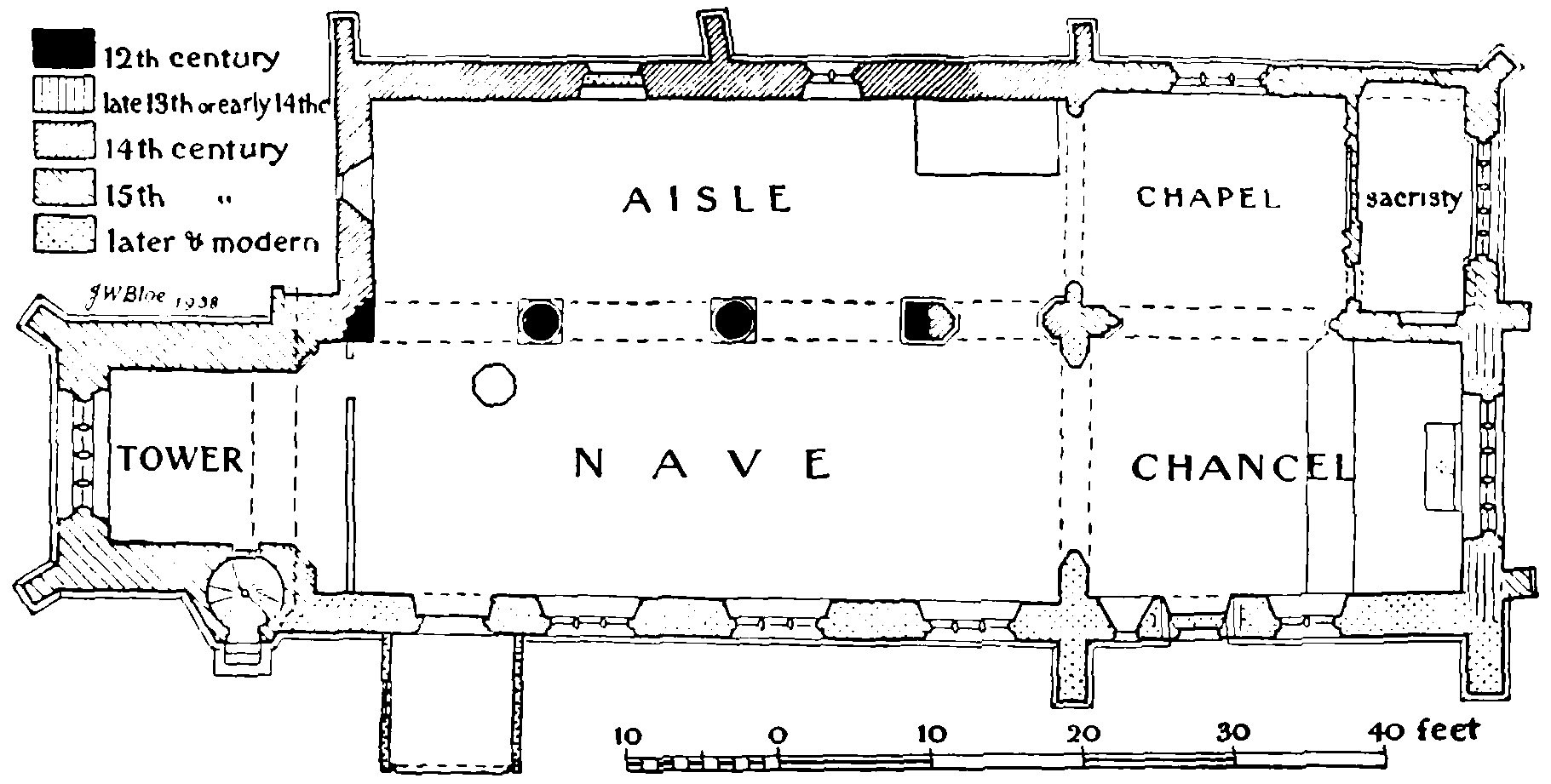Great Packington, Warwickshire: One Place Study.
Bickenhill, Warwickshire.
Great Packington, or Packington Magna, is close by to the village of Bickenhill, sometimes known as Church Bickenhill. The parish is adjacent to Little Packington. Bickenhill's parish historically included Church Bickenhill, Hill Bickenhill, Middle Bickenhill, Lyndon Quarter, Marston Culy and Wavers Marston. The centre of the village is now a designated conservation area.
Before the Norman Invasion of England in 1066, Bickenhill was held by Edward the Confessor. Bickenhill was recorded in the Doomsday Book of 1086 as Bichehelle and was owned by Turchil de Warwick, whose descendants became the de Arden family. They later adopted the surname de Bickenhill. From 1326, Bickenhill was held by Walter Parles who transferred it a year later to Sir John Pecche of Hampton, Warwickshire, and in 1295 Alice de Langley delcared herself the 'lady of Bickenhill'.

The Norman St. Peter's Church in the parish was founded in 1140 and the north aisle was expanded in the 1300s. The lancet windows in the chapel of this period have since been destroyed and the fireplace bricked up. During the 1400s, a stone tower was built of local cream-coloured Arden sandstone ashlar (later repaired in 1632) and the north chapel was added with an archway to the main body of the church. The Church has been a Grade 1 listed building since 1961.

Images credits: Geograph, British History Online.
In the 1800s there were three inns at Bickenhill: The Waggon and Horses, The Clock Inn and The Tavern. The Clock Inn was demolished to facilitate the widening of the A45 road. During the Second World War, Lancaster bombers were manufactured at Bickenhill.
In 1932, a part of the Elmdon parish was added to Bickenhill due to the Warwickshire Review Order, and after further decades of growth Bickenhill became part of the Metropolitan Borough of Solihull in 1974. The civil parish was renamed from Bickenhill to Bickenhill and Marston Green in 2014.
Elmdon Airport, later called Birmingham International Airport, was opened in Bickenhill by the British Prime Minister Neville Chamberlain and Princess Marina of Greece and Denmark, the Duchess of Kent, in July 1939. A second terminal was built in 1961. Today, the airport is adjacent to the National Exhibition Centre (NEC) and Genting Resort World Birmingham. Nearby also is Páirc na hÉireann, the main venue for Gaelic sports in the Midlands with three Gaelic Athletic Association pitches.
The National Motorcycle Museum is located within Bickenhill. Other modern amenities include the Bickenhill Household Waste and Recycling Centre.
Sources:
-
British History Online,
-
British Listed Buildings.
-
Darby, H. C. and Terrett, I. B. (1971) The Domesday Geography of Midland England. Cambridge University Press.
-
Geograph.
-
Lewis, Samuel ed. (1868) A Topographical Dictionary of England. London: S. Lewis & Co.
-
Open Doomsday.
-
Skipp, Victor Henry Thomas. (1963) Discovering Bickenhill. Department of Extra-Mural Studies, The University of Birmingham.
-
Solihull and District Campaign for Real Ale.
-
Thirsk, Joan. (2003) Rural Economy of England. Bloomsbury Publishing.
-
University of Nottingham: Survey of English Place-Names.
-
Visit Solihull.